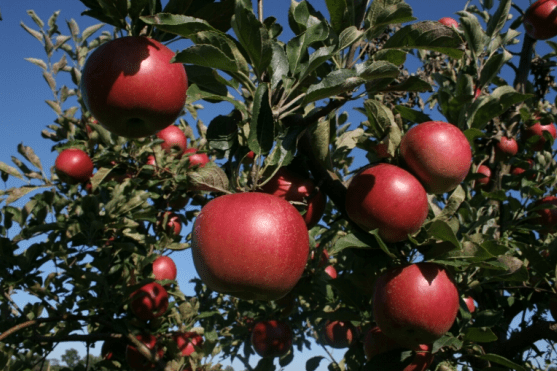China, with 40.5 million tons, and the European Union, with about 12.3 million tons, rank as the largest apple producers in the world.
Production volumes correspond to projections of the United States Department of Agriculture (USDA) for the 2020-21 cycle.
Then they are in that classification: the United States (4 million 490,000 tons), Turkey (4.3 million) and India (2.3 million).
Apple trees grow from a seed inside an apple. The seed needs soil, water, and sunlight to grow. According to the Wyoming government, people should not eat the seeds, because they contain cyanide, which is toxic.

There are many varieties of apples and they can be red, green or yellow.
Apples can be eaten in many ways, plain or processed: jellies, jams, raw, baked (apple pie, crisp), juice, cider, dried and canned fruits.
The USDA projects global production for 2020/21 to drop 3.6 million tons, to 75.9 million tons, due to a severe spring frost that significantly affected northwest China’s provinces.
It also forecasts a decline in trade due to declining exportable supplies in the European Union and the United States.
Apple producers
In particular, China’s production is estimated to be 1.9 million tonnes lower, at 40.5 million.
Although total production is down, higher volumes of lower-quality fruit are expected, boosting shipments to price-conscious Southeast Asian markets and bringing exports to 1.1 million tonnes.
Regarding the United States, exports are expected to fall more than 100,000 tons, to 750,000, as the lower supply reduces shipments to most export markets.
In addition, the USDA projects that imports will recover slightly from last year’s record low, increasing to 115,000 tons. The gains from Canada and China will more than offset the reduction in shipments from southern hemisphere suppliers.
Mexico‘s production is estimated at 680,000 tons, 80,000 less mainly due to the adverse weather in Chihuahua during the development of the fruit.
So far, growers continue to expand acreage, with additional plantations, especially in Chihuahua, Durango, and Zacatecas.
The new plantations in Chihuahua include new high-density orchards.
Despite lower production, imports are expected to contract slightly to 250,000 tonnes as stocks from last season reduce demand.
![]()

